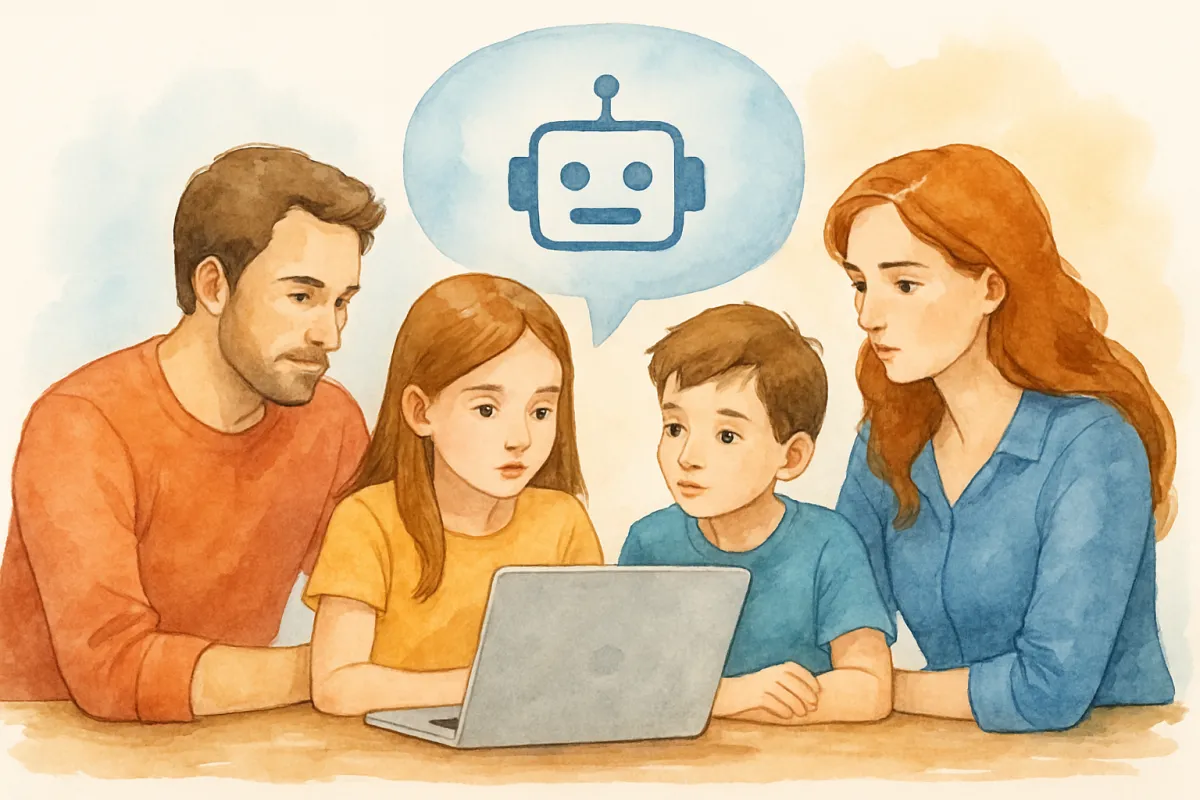
When Your Kid Asks ChatGPT About Sex: How AI Hijacks the Talk Before You Do
When Your Kid Asks ChatGPT About Sex: How AI Hijacks the Talk Before You Do
Why AI is reshaping parent–child conversations (and the one question that keeps them safe)
Last Tuesday, my friend Ella discovered her 9-year-old had been having a very thorough conversation with ChatGPT about reproduction. Not the sanitized “when a mommy and daddy love each other very much” version she’d been rehearsing in her head for months.
The full biological breakdown.
Follow-up questions about conception, pregnancy complications, and—I kid you not—the economic impact of raising children.
Her first instinct? Panic. Her second? Delete the chat history and pretend it never happened.
Here’s the thing: your kid isn’t the first to crowdsource life’s big questions from AI. And they won’t be the last.
The New Reality of Curious Kids
Children ages 7–12 are asking AI about everything parents assumed they’d ask them first:
Death
Divorce
Sex
Religion
Why their friend’s parents got arrested
Whether they’re adopted
If their parents love them as much as their sibling
Kismet Fact: Kids as young as seven ask AI the questions they’d never risk asking you—not because they don’t trust you, but because AI never rolls its eyes, gets flustered, or changes how it treats them afterward.
But here’s the catch: their developing brains aren’t yet wired for source evaluation. ChatGPT’s confident response carries the same weight as yours. Maybe more, because it doesn’t come with the facial expressions that scream “Mom’s uncomfortable.”
Why This Changes Everything About Parent–Child Communication
Your child’s relationship with AI is forming their blueprint for seeking information and emotional support. Neuroscience is clear: patterns formed now—who they turn to, what sources they trust—become neural highways that strengthen with repetition.
If AI becomes their go-to for sensitive topics, you’re not just missing conversations. You’re missing the chance to guide them through life’s complexity.
This isn’t about competing with AI. It’s about positioning yourself as the irreplaceable human element: context, values, and unconditional love.
The 3-Step “First Source” Strategy
Instead of playing defense, become the person your child naturally turns to first.
Step 1: The Daily Question Ritual (2 minutes)
Ask every evening: “What’s one thing you wondered about today?”
Validate first. Teach later.
Step 2: The AI Partnership Conversation
Instead of banning AI (spoiler: not enforceable), collaborate:
“When you have big questions, ask me first. If I don’t know, we’ll research together. Deal?”
Step 3: The “Humans vs. AI” Teaching Moment
When they share something from AI, ask:
“What do you think about that answer?”
“Does that match your experience?”
“What would you want to know that AI couldn’t tell you?”
The One Question That Changes Everything
Whenever your child shares something they learned elsewhere, ask:
“What else do you want to know about that?”
It:
Keeps the door open
Reveals their real worries
Lets you address the emotional layers AI misses
Making Hard Conversations Easier
You don’t need perfect answers. You just need to be the safe person who helps them think.
When your 8-year-old asks about death:
“That’s one of the biggest questions people think about. What made you wonder about that?”
When they ask about babies:
“I’m so glad you asked me. What have you heard so far?”
The Bottom Line
AI isn’t going away. Your child’s access to information will only increase. But their need for a trusted human to help them process it? Irreplaceable.
The families who thrive won’t be the ones who restrict tech. They’ll be the ones who stay curious, stay available, and stay their child’s first source.
💬 What’s the most unexpected or profound thing your child has asked lately—to you, AI, or even a sibling? Hit reply and tell me. I’m collecting stories for a future piece on the wild things kids ask (and what it reveals about their inner world).
👉 Want more tools like this? Join the free Raising Digital Natives community here.
